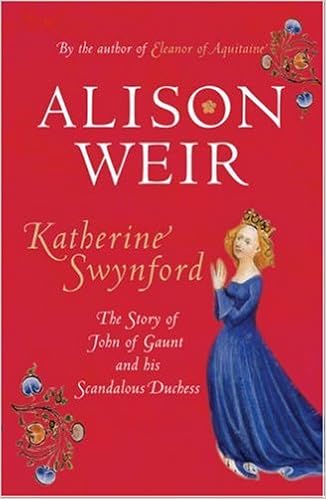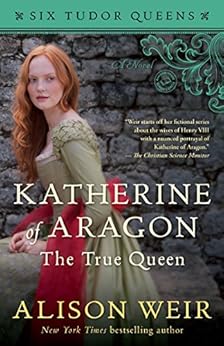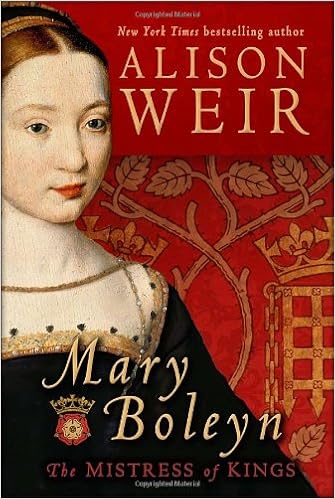
Description
Review “Alison Weir has perfected the art of bringing history to life. There is a breadth of vision to her research and writing that provides a sense of time and place as well as consequence.” — Chicago Tribune “Alison Weir is one of our greatest popular historians.” — The Daily Mail “Weir provides immense satisfaction. She writes in a pacy, vivid style, engaging the heart as it does the mind.” — The Independent “Alison Weir’s hugely popular history books are as gripping as novels.” — The Times of London About the Author Alison Weir is one of the world’s foremost popular historians. Her books include The Six Wives of Henry the Eighth , Eleanor of Aquitaine , Mary Queen of Scots, and most recently the novel Innocent Traitor . Weir lives in the U.K. Excerpt. © Reprinted by permission. All rights reserved. Prologue: Spring 1378 In March 1378, putting aside ‘all shame of man and fear of God’, John of Gaunt, Duke of Lancaster, the mightiest subject in the realm of England, was to be seen riding around his estates in Leicestershire ‘with his unspeakable concubine, a certain Katherine Swynford’. Not only was the Duke brazenly parading his beautiful mistress for everyone to see, but he was ‘holding her bridle in public’, a gesture that proclaimed to all his possession of her, for it implied that the rider thus led was a captive, in this case one who had surrendered her body, if not her heart. And as if this were not shocking enough, the fact that the Duke was flaunting his mistress ‘in the presence of his own wife’ created a scandal that would soon spread throughout the length and breadth of the kingdom and beyond. Even today, echoes of that furore still reverberate in the pages of history books. John of Gaunt’s conduct in that long-distant spring led disapproving contemporaries to conclude that he had ‘made himself abominable in the eyes of God’, and that Katherine Swynford was ‘a witch and a whore’. Thus was born the legend of the ‘famous adulteress’, who occupies a unique place in English history. There can be no doubt that in her own lifetime, she was the subject of great scandal and notoriety, for she was closely linked to John of Gaunt for a quarter of a century before they married, and she had already known him for many years before he wed the desirable young wife who was so openly insulted on that tour of Leicestershire in 1378.Years later, after John’s wife had died and he married Katherine, controversy and criticism surrounded their union, for she was far below him in status, morally unacceptable and considered highly unsuitable in many respects. But she confounded her critics and gradually came to be tolerated and even respected. Indeed, all the evidence suggests that Katherine Swynford was no lightly principled whore, which is what hostile chroniclers would have us believe; on the contrary, she was one of the most important female figures of the late fourteenth century, and more likely to have been a woman deserving of our admiration and esteem. Her partner in adultery — later her husband — was the son of King Edward III of England, and one of the epoch’s most famous and celebrated paragons. From her is descended every English monarch since 1461, and no fewer than five American presidents.The truth about Katherine Swynford has been obscured by people down the centuries accepting at face value the calumnies that were written about her by a few disapproving contemporaries; and, too, by nearly every aspect of her story being shrouded in mystery, exaggerated by debate or simply obliterated by time. Nearly everything about her is controversial. When and where was she born? What did she look like? How many children did she bear? When did she become John of Gaunt’s mistress? What influence did she have? And what was the nature of their relationship over the years? Above all, did she really deserve all the moral opprobrium heaped upon her after her lover paraded her in public on that fateful spring day?We will never know the whole truth about Katherine and John, for only echoes of their voices and their deeds have come down to us, but one thing is certain, and it shines forth from nearly every source: these two were lovers, and their love endured through prosperity and adversity, war and endless separations, time and distance. Love and destiny brought them together, sealing their fate and changing the course of English history itself. So this is, essentially, a love story. Read more
Features & Highlights
- In her remarkable new book, Alison Weir recounts one of the greatest love stories of medieval England. It is the extraordinary tale of an exceptional woman, Katherine Swynford, who became first the mistress and later the wife of John of Gaunt, Duke of Lancaster.Katherine Swynford’s charismatic lover was one of the most powerful princes of the 14th century, the effective ruler of England behind the throne of his father Edward III in his declining years, and during the minority of his nephew, Richard ll. Katherine herself was enigmatic and intriguing, renowned for her beauty, and regarded by some as dangerous. Her existence was played out against the backdrop of court life at the height of the age of chivalry and she knew most of the great figures of the time — including her brother-in-law, Geoffrey Chaucer. She lived through much of the Hundred Years War, the Black Death, and the Peasants’ Revolt. She knew loss, adversity, and heartbreak, and she survived them all triumphantly. Although Katherine’s story provides unique insights into the life of a medieval woman, she was far from typical in that age. She was an important person in her own right, a woman who had remarkable opportunities, made her own choices, flouted convention, and took control of her own destiny — even of her own public image. Weir brilliantly retrieves Katherine Swynford from the footnotes of history and gives her life and breath again. Perhaps the most dynastically important woman within the English monarchy, she was the mother of the Beauforts and through them the ancestress of the Yorkist kings, the Tudors, the Stuarts, and every other sovereign since — a legacy that has shaped the history of Britain.





